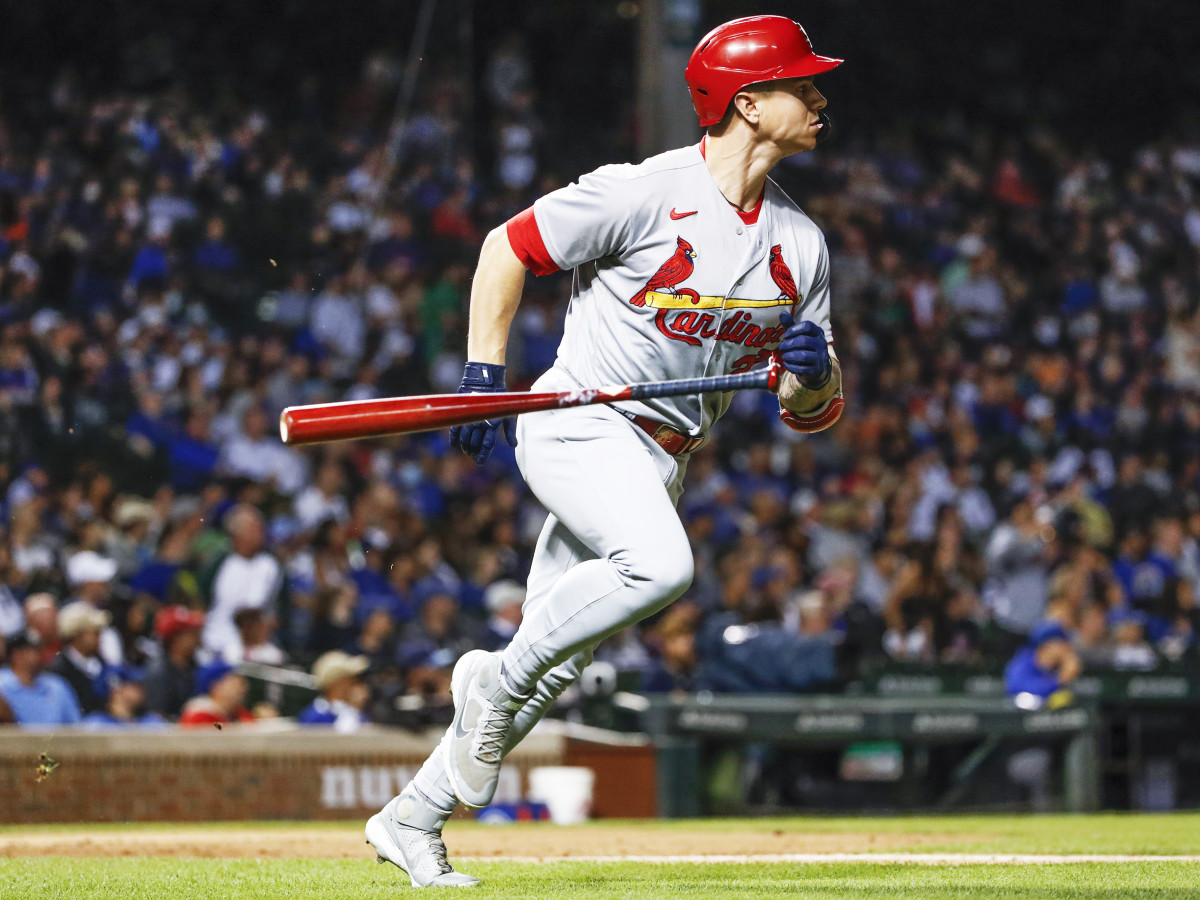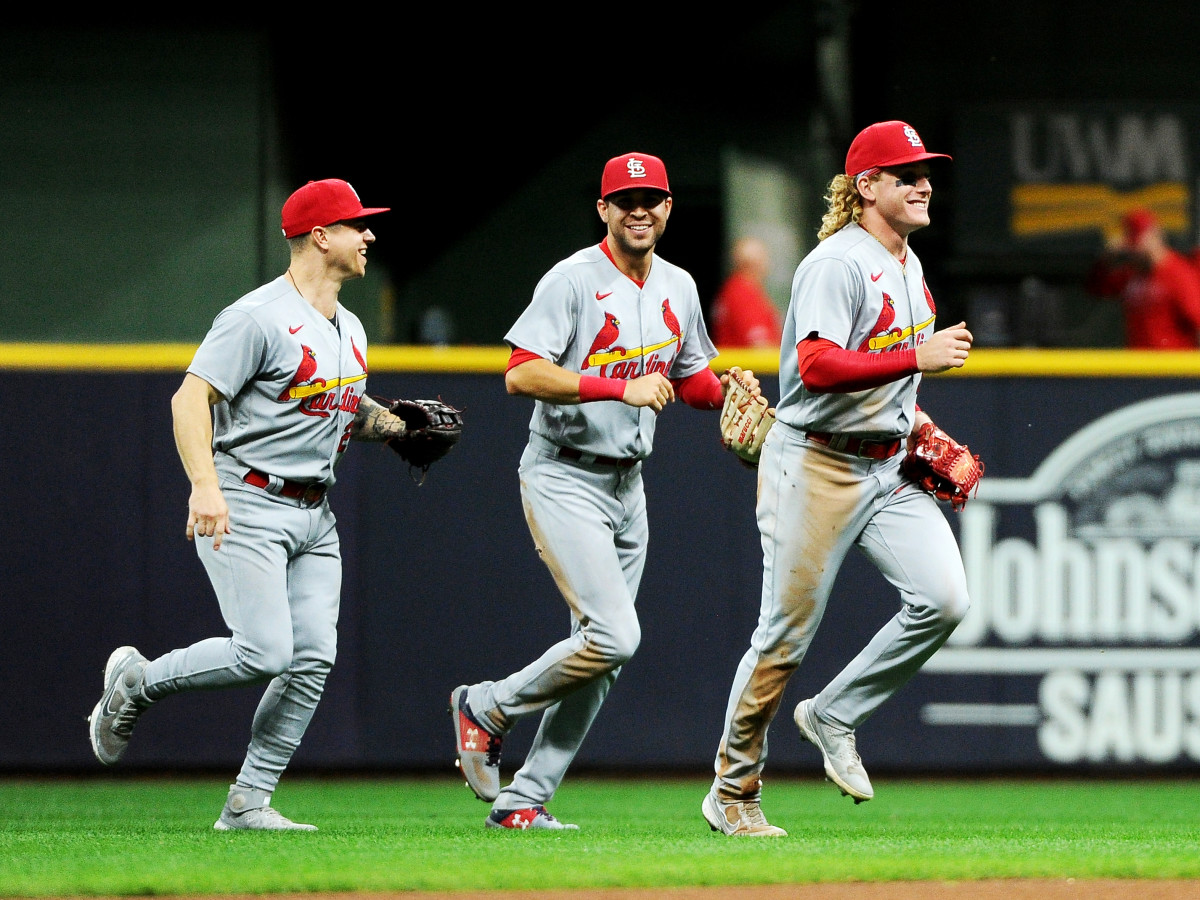The Cardinals, the Hot-Streak Fallacy and the Special Teams of Baseball
Welcome to The Opener, where every weekday morning you’ll get a fresh, topical column to start your day from one of SI.com’s MLB writers.
Hot only begins to describe the Cardinals. They are just the fourth team since 1900, and the first since the '35 Cubs, to win 16 consecutive games in September. They are a once-in-86-years kind of scalding.
Be prepared over the next week to hear commentary about how the Cardinals are “hot at the right time” and “the team nobody wants to face.” Memories of the 2007 Rockies will be conjured. This kind of analysis derives from emotion and assumption. But is there data to back it up? No.
What you think will become of St. Louis in October depends on which law of physics you prefer: Newton’s First Law of Motion, or the Etch A Sketch First Law of Screen Shaking.

If you’re a Newtonian kind of person you believe an object in motion stays in motion with the same speed and direction unless acted upon by an unbalanced force. Over the past two weeks, the Mets, Padres, Brewers and Cubs did not provide such an unbalanced force to stop the Cardinals’ momentum.
Among the Newtonians is Tigers manager A.J. Hinch, who managed two of the 10 hottest September teams to reach the postseason in the wild-card era: the 2018 Astros (21–6) and the 2019 Astros (19–6). He also managed one of the coldest September playoff-bound teams, the 2015 Astros (13–17). Momentum, he says, matters.
“I think it can only help the wild-card team that is playing well,” Hinch says, “since that team has essentially been playing playoff baseball for weeks. It is the closest thing to mirroring how the game is played in stress during October.”
The Etch A Sketchers know that every day is a clean slate. With one big shake, the start of the postseason makes a beautifully crafted 16-game September winning streak disappear. All that work becomes a footnote, not an advantage.
It is against the way we like to think (which is, easy narratives rule!), but the years have shown that how a team enters October—whether playing poorly or red-hot—has no direct bearing on how it will play in the postseason.
Watch MLB games online all season long with fuboTV: Start with a 7-day free trial!
Those 2007 Rockies are the patron saints of the Newtonian faith. There is even a bronze plaque at Coors Field that bears witness to the 21–1 run that carried them to the World Series, where they were promptly swept by the Red Sox. The Rockies closed a 21–8 September with a 14–1 run that continued with sweeps in the Division Series and Championship Series.
Less cited is the 2017 Cleveland club, which was even hotter than the 2007 Rockies—or any postseason team since 1995. Cleveland posted the best September by any playoff team in the wild-card era: 26–4. Entering Game 3 of the Division Series against the Yankees, Cleveland was 35–4 in its previous 39 games. Then it lost a 1–0 game. The screen went blank. It lost the next two games, with Trevor Bauer lasting less than two innings and Corey Kluber less than four, and went home a footnote.
Which camp are you in? Newton or Etch A Sketch?
Before you give a final answer, let’s consider the data. Let’s identify the 10 hottest teams entering the postseason in the wild-card era and the 10 coldest teams. We’ll define them by their winning percentage in September/October entering the postseason and see how well they did in the playoffs. (One note: The 10 hottest teams group includes 11 teams because of a tie.)
Sept/Oct Win Pct. | Playoff Series Won | Playoff Record | Playoff Win Pct. | Pennants | WS Titles | |
|---|---|---|---|---|---|---|
Hottest Teams | .788 | 9 | 50–48 | .510 | 2 | 0 |
Coldest Teams | .409 | 16 | 64-42 | .604 | 5 | 2 |
Well, look at that. The coldest teams won more postseason series, more postseason games, more pennants and more World Series titles than the ones riding “momentum.” And it’s not even close.
The hottest teams group includes four teams that had to play that well down the stretch to snag a wild card, just as these Cardinals have done. Three of those four teams, the 1995 Yankees, 2001 A’s and '13 Cleveland club, lost their first postseason matchup. The fourth, the '04 Astros, lost in the second round. The four hottest wild-card teams of the wild-card era went 10–13 in the postseason. Edge: Etch A Sketch.
On the flip side, there are a handful of examples of cold teams down the stretch getting to the World Series, including the 1998 Padres (9–15), 2000 Yankees (13–18), 2006 Cardinals (12–17), 2006 Tigers (12–16) and 2017 Dodgers (13–17). We just don’t remember them as such because they don’t fit an easy narrative.
But wait a minute. Aren’t the Cardinals an outlier? Only the 1909 Pirates, '16 Giants and '35 Cubs won 16 games in a row in September. So, we have never seen a team this hot, this late since André Cassagnes was a 9-year-old boy outside Paris, still 24 years from inventing the Etch A Sketch.
What makes the Cardinals so dangerous—besides our faith in momentum?
“The special teams of baseball,” St. Louis manager Mike Shildt says, “they don’t get a lot of attention, but they can swing a ball game.”
Defense and baserunning are the special teams of baseball, the finer arts that don’t get mentioned nearly enough as pitching and hitting. And no team is better at the special teams of baseball than St. Louis. A sampling:
"Special Teams" | STL | MLB Rank |
|---|---|---|
Defensive Runs Saved | 83 | First |
Defensive Efficiency | .715 | Second |
Outs on Bases | 34 | Fewest |
Extra Bases Taken Pct. | 44% | Fourth |
Stolen Bases | 85 | Most by playoff-bound team |
Stolen Base Pct. | 80% | Fourth (tied) |
Harrison Bader is playing a Gold Glove center field. Bader, Tyler O’Neill and Dylan Carlson join the 1955 trio of Rip Repulski, Bill Virdon and Wally Moon as the only Cardinals outfields with three players 27 and under with at least 15 homers (min. 50% of games in outfield). Each member of this year's triad is a plus defender.
Nolan Arenado is peerless with the glove at third base. Tommy Edman has gone from first to third on a single more than any player in baseball. Paul Goldschmidt is 12-for-12 in stolen base attempts. O’Neill, shortstop Edmundo Sosa and Bader rank 4-5-6 in the majors in sprint speed (min. 100 competitive runs).
This is how St. Louis wins games: It plays textbook, taut baseball. It pays attention to detail. The Cardinals rank in the bottom half in home runs hit and last in strikeout rate by pitchers. That’s not the profile of your typical 2021 postseason team. For all of their 16 straight wins, the Cardinals could be looking at Max Scherzer and the Dodgers in Los Angeles in a win-or-go-home playoff game. Scherzer alone could be that unbalanced force acting upon the Cardinals’ forward momentum.

The temptation is to pass off St. Louis as a team better suited to the ebbs and flows of the regular season than the urgency of the postseason. But this 16-game winning streak was built on the urgency of getting to the next base and catching the next ball put in play nine innings at a time. That doesn’t change in October.
The Cardinals are 20–6 this September. It is the seventh-best last-month winning percentage among all playoff-bound teams in the wild-card era. The six hotter teams went 14–18 in the postseason, with six of them out in the first round.
The narrative says St. Louis is peaking at the right time. The data tells us it doesn’t matter. Whatever camp you are in, know this: The Cardinals are not beating themselves in October. They will force their opponent to play a clean, full game to beat them.
More MLB Coverage:
• Four Reasons Behind the Cardinals’ Winning Streak
• How to Judge Trevor Bauer
• Joey Votto Is Finding Satisfaction in Abandoning Perfection
• Will This Mariners Rebuild Be Any Different?
Sports Illustrated may receive compensation for some links to products and services on this website.
